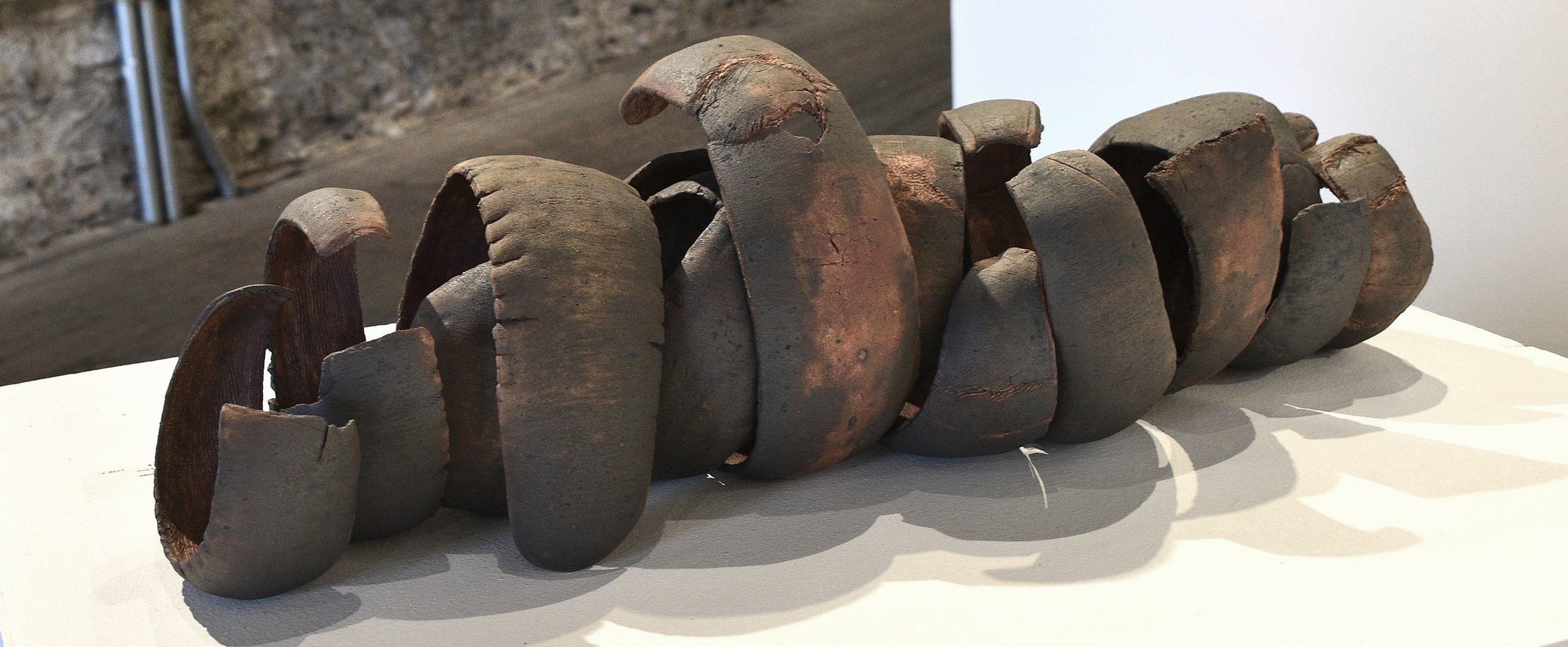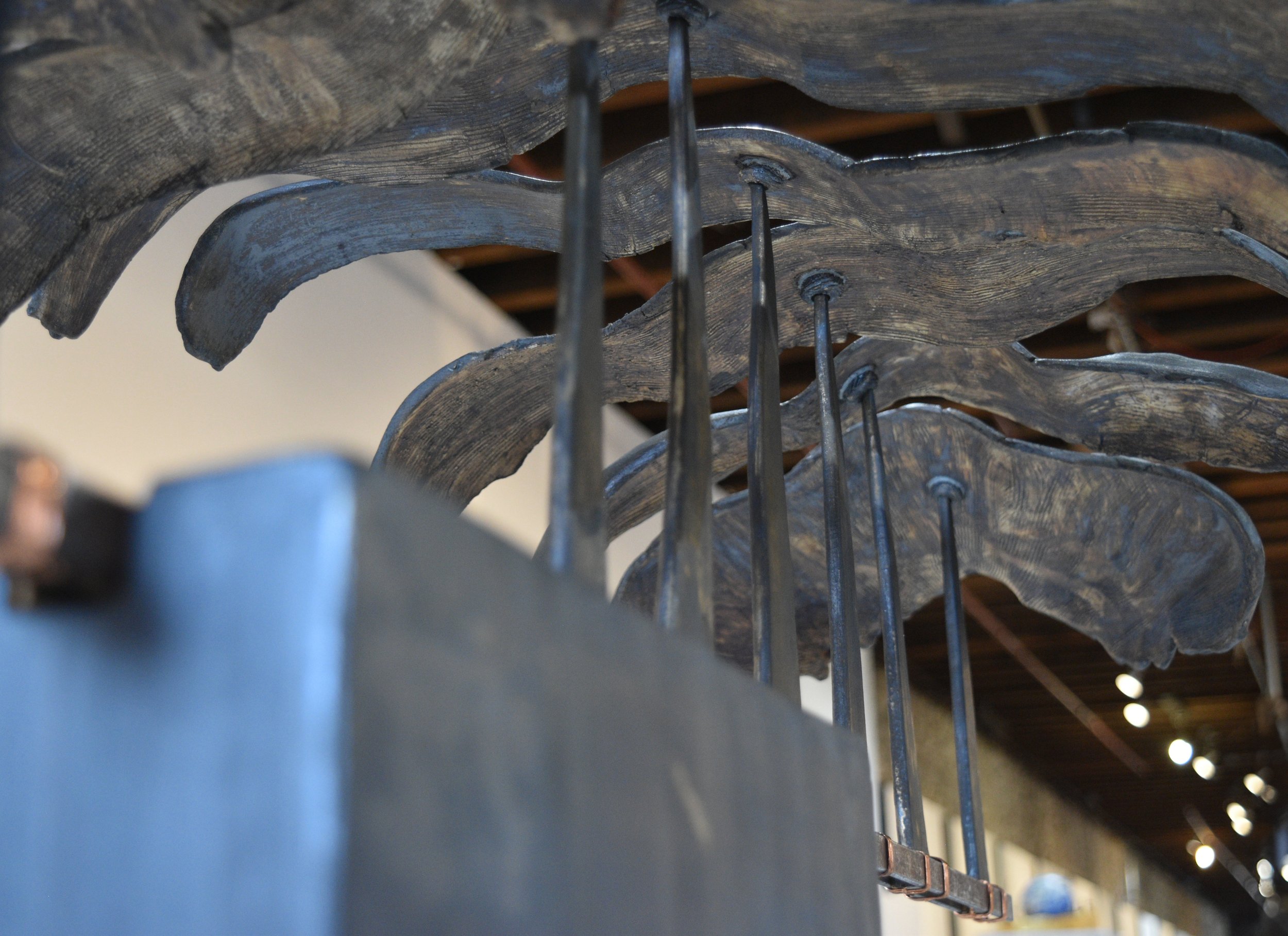
Sculpture
The Arthropoda Project series is inspired by invertebrates—our small, often overlooked neighbors who live alongside us in our homes, waterways, and forests.
The pieces are made with a minimal but mutable palette of fired ceramics, paper, wire, and street debris collected during neighborhood walks in Gowanus, Brooklyn. I use street-sweeper bristles and discarded construction tie wire as-is or with minimal intervention. The ceramic work retains the cracks, seams, and surface marks from their making, and are finished with a limited palette of powdered oxides, ink, and wax.
Descriptions at right; selected works below.
-
This piece is inspired by the lady crab, a small crab that can be found off of the Rockaways in Queens. I’ve never encountered one that was alive—only the molts or remnants from a shorebird’s meal. The shell’s pigmentation pattern is beautiful.
Like the majority of my ceramic work, nothing is fixed—every piece is balanced on the ends of rods (or in the case of the four articulated legs, one another. The 22 5lb. custom-made cement bases house a DIY telescoping rod that allows heights to be adjusted.
-
FYTY Richard Serra consists of 12 stoneware forms that are supported by and suspended off of the gallery wall with a simple wire harness. Each hand-built form is unique, with heights varying from 18 – 29 inches and circumferences from 14 – 25 inches. The weight of each piece creates tension in the wire harness and prevents it from falling.
The work takes conceptual and visual inspiration from the Eastern Black Swallowtail caterpillar as it prepares for metamorphosis. At this point, the caterpillar has grown and shed its exoskeleton multiple times in preparation for the its transformation. In the penultimate stage, the animal secretes a thin, strong silk girdle with which it secures itself to a twig or branch prior to forming the chrysalis.
-
Amphipoda is inspired by aquatic crustaceans known commonly as scuds. The work is composed of five discrete forms that are slotted into a custom-fabricated steel support. The protruding "hairs" are bristles from the steel brushes of street sweepers that I collected from the sidewalks specifically for this piece.
Unfortunately, COVID-19 shut down the ceramic studio where I was working, putting the project on hold. Left with no studio and no materials, I turned to what I had at home for a creative outlet—a collection of metal junk and paper.
-
In the fall and spring, the sidewalks in my neighborhood are covered in the fallen leaf petioles from a variety of street trees. They reminded me of the legs of house centipedes; fierce and fragile creatures.
-
Exuviae is inspired by invertebrate molts, and is comprised of ten semicircular forms that can be freely arranged according to aesthetics and available space. The only stipulation is that forms are not affixed and lean against one another for support. Dimensions variable. Configuration shown is 29 x 11 x 9 inches.
-
Trilobita functions as both a love letter and memorial to the planet and to the biodiversity it has nurtured over the last 3.7 billion years. This extinct class of marine arthropods is an appropriate subject for fired stoneware’s contradictory qualities of strength and fragility. Carefully balanced and held in place by gravity alone, the trilobite is free to respond to floor vibrations and the movement of air. A careless move, however, will bring it crashing down.
-
Menace is one of many slang names for the common woodlouse, a terrestrial crustacean recognized for its ability to curl into a ball when threatened. Ironically, woodlice are far from being menaces. These detrivores play an important role in nutrient cycling, but are also the unfortunate bearers of our own ecological menace, as their bodies accumulate the heavy metals that we’ve introduced into the environment.
-
These mosquitos are made of discarded construction tie wire collected over the last two years on weekly trips to my studio.
The neighborhood’s transformation over the past few years thanks to real estate developers is astounding. Even more astounding—that these luxury apartments are sited along one of the most contaminated waterways in the United States—the Gowanus Canal.









































